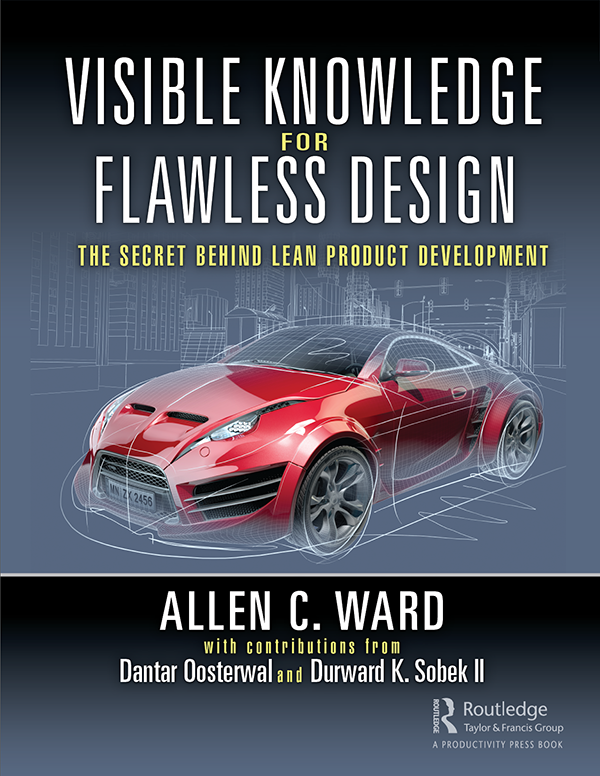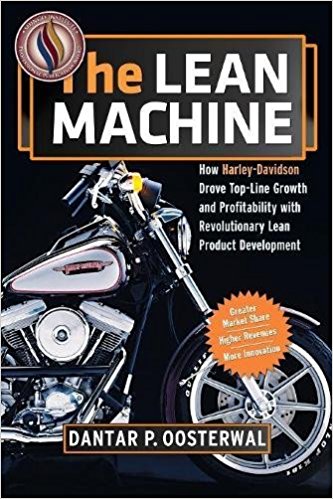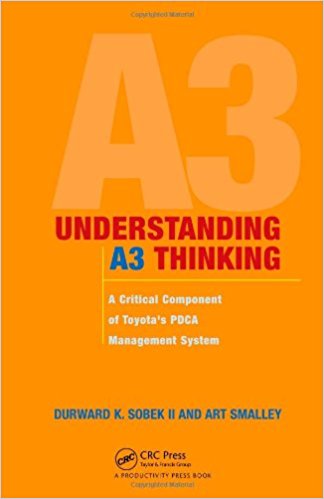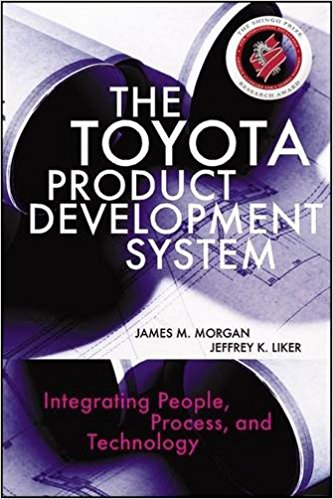Books, Publications, & Videos
We have a passion for learning...
...and for sharing what we've learned.
Below is a list of our books, a few of our publications, and select videos with links.
Books
Title: Visible Knowledge for Flawless Design
Author: Allen Ward, Dantar P. Oosterwal, & Durward K. Sobek II
Description:This book describes what could be termed an 'engineering development secret' -- the creation and application of visible knowledge to propel effective product development. Visible knowledge is a tool nearly lost in the West, but it has been used to great effect by Toyota in its 50 year march from non-competitiveness to its current status as the preeminent global automobile company.
Visible Knowledge for Flawless Design presents the reader with a systematic approach to create, capture, and display knowledge in a way that allows development teams to optimize the design of their products and production processes. Visible knowledge not only applies to knowledge management, but also provides a means of collaboration to facilitate better decision-making in the development process. The book provides a brief history and background of the technique, then takes the reader through example problems in a step-by-step workbook style that facilitates practice and application. It concludes with suggestions on implementation in the reader’s work environment.
Dr. Allen Ward is the patriarch of Lean Product Development. His efforts led to the rediscovery of Visible Knowledge and the recognition of its importance in the development of new manufactured products. Allen was driven by a desire to test his hypothesis that the optimal design would be achieved through a 'design compiler' that would simultaneously evaluate all design variables to maximize the overall benefit for the customer. Or more simply put, if all of the data and trade-offs to a design were defined in advance, then simultaneously evaluating the design factors would lead developers to the optimal design solution.
Dr. Ward set out to study design processes in industry to understand how companies evaluated design parameters to optimize their designs. He discovered only one company in which developers methodically created knowledge, evaluated parameters in advance of making design decisions according to his hypothesis for optimal design, and reused that knowledge in subsequent design cycles. This company was Toyota and the development system employed there was multiple times more effective and efficient than anything else he found in his research. Dr. Ward referred to the technique he uncovered as 'visible knowledge.' By carefully understanding the relationships between design parameters and product performance, then creating visible representations of those relationships, new knowledge is generated in such a way that engineering comparisons can be made quickly and efficiently resulting in faster decision-making with less design iteration. The general form of the solutions can then be stored and applied on all future problems that fit the form, greatly extending the development capability of the development team. Dr. Ward wrote a manuscript to describe visible knowledge, but tragically passed away before it was ever published. Visible Knowledge for Flawless Design is the completion of that manuscript. It has been corrected and compiled for publication in an effort to keep it as close as possible to the original manuscript, but updated and augmented in key areas to keep the text current and provide additional insight and examples.
Title: The Lean Machine
Winner of the 2017 Shingo Professional Publication Award.
Author: Dantar Oosterwal
Description:Some things never change. Harley-Davidson is still the great, iconic American motorcycle. But like many storied companies, Harley has had to evolve to stay on top, even to stay in existence. From near-extinction in the early eighties, it has risen to worldwide recognition for management excellence and innovation. The Lean Machine is an inside look at how Harley-Davidson was able to adapt in an ever-changing world and accelerate product development. Rooted in Japanese productivity improvement techniques, Knowledge-Based Product Development helped fuel Harley's incredible period of sustained growth. Even after the company earned the PDMA Corporate Innovator Award in 2003, Dantar Oosterwal, a Harley-Davidson executive, took the improvement a quantum leap further. By implementing Lean Product Development techniques, Harley realized an unprecedented fourfold increase in throughput in half the time, powering annual growth of more than ten percent. In The Lean Machine, Oosterwal shows the day-to-day transformation at Harley and identifies universal change and improvement issues, so that companies in any industry can incorporate Knowledge-Based Innovation-with predictably excellent results.
Title: Lean Product and Process Development 2nd edition
Winner of the 2008 Shingo Research and Professional Publication Award.
Author: Allen Ward & Durward Sobek
Description:"The P-51 Mustang—perhaps the finest piston engine fighter ever built—was designed and put into flight in just a few months. Specifications were finalized on March 15, 1940; the airfoil prototype was complete on September 9; and the aircraft made its maiden flight on October 26. Now that is a lean development process!"
—Allen Ward and Durward Sobek, commenting on the development of the P-51 Mustang and its exemplary use of trade-off curves.
Despite attempts to interpret and apply lean product development techniques, companies still struggle with design quality problems, long lead times, and high development costs.
In a truly groundbreaking first edition of Lean Product and Process Development, Ward delivered -- with passion and penetrating insights that cannot be found elsewhere -- a comprehensive view of lean principles for developing and sustaining product and process development.
In the second edition, Durward Sobek, professor of Mechanical and Industrial Engineering at Montana State University—and one of Ward's premier students—edits and reorganizes the original text to make it more accessible and actionable. This new edition builds on the first one by:
• Adding five in-depth and inspiring case studies.
• Including insightful new examples and illustrations.
• Updating concepts and tools based on recent developments in product development.
• Expanding the discussion around the critical concept of set-based concurrent engineering.
• Adding a more detailed table of contents and an index to make the book more accessible and user-friendly.
Title: Understanding A3 Thinking: A Critical Component of Toyota's PDCA Management System
Winner of the 2009 Shingo Research and Professional Publication Award recipient.
Author: Durward Sobek & Art Smalley
Description:Notably flexible and brief, the A3 report has proven to be a key tool In Toyota’s successful move toward organizational efficiency, effectiveness, and improvement, especially within its engineering and R&D organizations. The power of the A3 report, however, derives not from the report itself, but rather from the development of the culture and mindset required for the implementation of the A3 system.
In Understanding A3 Thinking, the authors first show that the A3 report is an effective tool when it is implemented in conjunction with a PDCA-based management philosophy. Toyota views A3 Reports as just one piece in their PDCA management approach. Second, the authors show that the process leading to the development and management of A3 reports is at least as important as the reports themselves, because of the deep learning and professional development that occurs in the process. And finally, the authors provide a number of examples as well as some very practical advice on how to write and review A3 reports.





